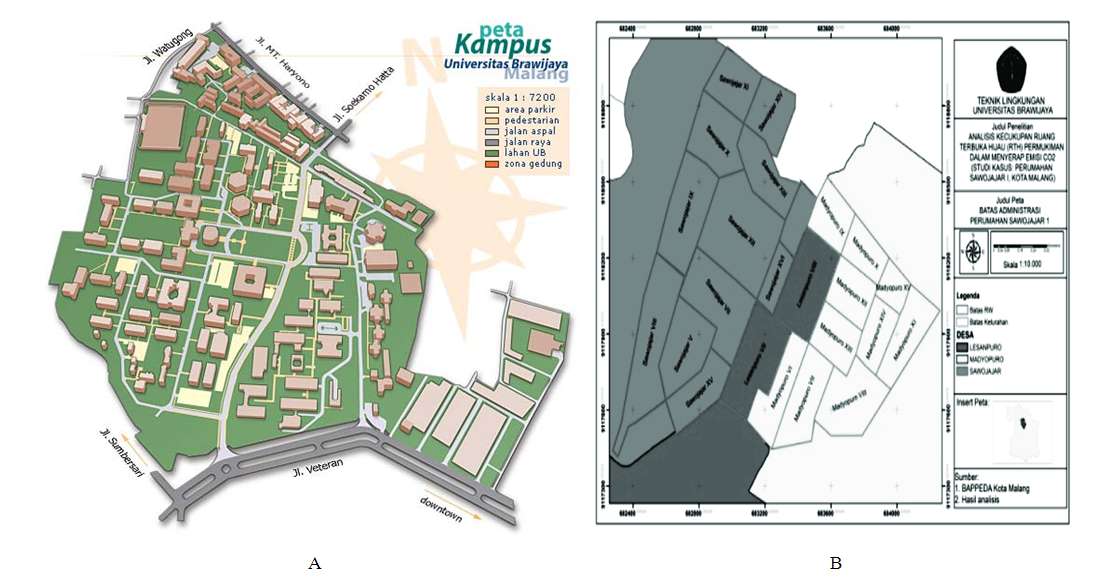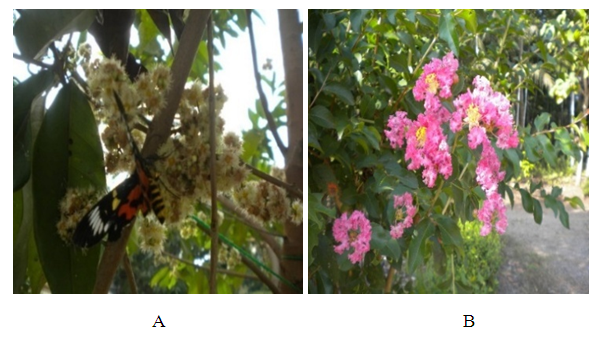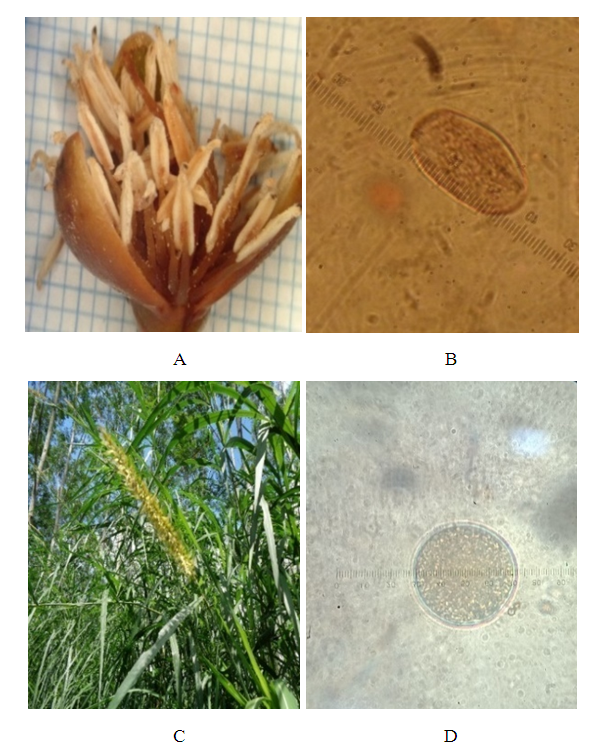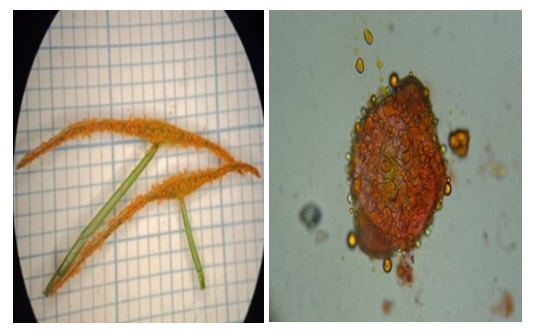-
Paper Information
- Paper Submission
-
Journal Information
- About This Journal
- Editorial Board
- Current Issue
- Archive
- Author Guidelines
- Contact Us
International Journal of Agriculture and Forestry
p-ISSN: 2165-882X e-ISSN: 2165-8846
2022; 12(2): 37-44
doi:10.5923/j.ijaf.20221202.01
Received: Jun. 6, 2022; Accepted: Jul. 20, 2022; Published: Jul. 27, 2022

Plant Families Potentially Visited by the Honey Bees (Apis spp. and Trigona spp.) at Universitas Brawijaya Campus Area and Sawojajar Residential Area of Malang City, East Java, Indonesia
Jati Batoro1, Anang Lastriyanto2, Muchammad Junus3, Firman Jaya3, Yacobos Lamerkabel4, Ervan5, Dewi Masyithoh6, Ustadi6
1Biology Department Faculty of Mathematics and Natural Sciences, Jl. Veteran Malang, East Java, Indonesia
2Faculty of Agricultural Technology, Jl. Veteran Malang, East Java, Indonesia
3Faculty of Animal Science, Universitas Brawijaya, Jl. Veteran Malang, East Java, Indonesia
4Ambon University, Indonesia
5Universitas Mataram, Indonesia
6Kembang Joyo Honey Bee Industry, Malang Regency, Indonesia
Correspondence to: Jati Batoro, Biology Department Faculty of Mathematics and Natural Sciences, Jl. Veteran Malang, East Java, Indonesia.
| Email: |  |
Copyright © 2022 The Author(s). Published by Scientific & Academic Publishing.
This work is licensed under the Creative Commons Attribution International License (CC BY).
http://creativecommons.org/licenses/by/4.0/

Indonesia is known as a megadiverse country with great potential in products of plant organs such as pollen, so that it can support the world-scale honey bee industry. Honey contains antioxidants, so it can improve skin rejuvenation, beauty, and it also is a source of minerals, vitamins, carbohydrates, fructose. This study was conducted based on direct observation of flower plant specimens that were in bloom, making notes on the types of bees, plant organs visited by bees to collect honey, pollen, fruit, and resin. The taxon of flower plants, flowering season, time of visit, and taking nectar by honey bees, were then identified. The next step was to observe the flower structure (pollen-filled anthers) under a binocular and then it was photographed. In collecting data in the community, direct interviews were carried out to obtain additional information on local knowledge about bees. This study aimed to uncover, characterize and analyze the family, types of flower plants, related to honeybee feed in the form of pollen and nectar. From the research results, the types of honey bees found were the Apis genera (Apis dorsata, Apis mellifera, Apis cerana) and the stingless bee (Trigona sp.). The shape and size of pollen varied in each family, even in one type of plant in the same flower might have two pollen morphology. The diversity of green campuses, school environments, tourist attractions, housing, even urban areas, urban forests has the potential to develop urban honeybee production. Meanwhile, the diversity of plant species visited by honey bees to collect pollen, nectar, and resin includes 43 families. Various flower plants family which grows in campus area, residential area, and urban forests, has the potential to provide honey bee food.
Keywords: City of Malang, Campus environment, Housing, Honey bees, Plant families
Cite this paper: Jati Batoro, Anang Lastriyanto, Muchammad Junus, Firman Jaya, Yacobos Lamerkabel, Ervan, Dewi Masyithoh, Ustadi, Plant Families Potentially Visited by the Honey Bees (Apis spp. and Trigona spp.) at Universitas Brawijaya Campus Area and Sawojajar Residential Area of Malang City, East Java, Indonesia, International Journal of Agriculture and Forestry, Vol. 12 No. 2, 2022, pp. 37-44. doi: 10.5923/j.ijaf.20221202.01.
Article Outline
1. Introduction
- Honey bee is an insect that has a social system (eusocial) included in the family Apidae, order Hymenoptera. The Hymenoptera is one of the largest orders of class Insecta comprising more than 100,000 species [11,9]. With the diversity of around 20,000 species of bees worldwide, the honey bees (Apis L.) are the most heavily researched and managed, focusing on the efforts of thousands of researchers [6]. Apis dorsata Fabricius has 3 subspecies, namely: Apis dorsata dorsata, Apis dorsata binghami, and Apis dorsata breviligula. From the results of a study by [10] that with mtDNA analysis of Apis cerana from Indonesia, China, Korea, Malaysia, Russia, Taiwan, Vietnam, Thailand, and Japan, it was concluded that the Apis cerana of Far East Russia is a subspecies. [16] reported four species belonging to the genus Tetragonula were found, namely T. fuscobalteata, T. biroi, T. sapiens, and T. laeviceps. Two species, T. biroi and T. sapiens are the new records in Sulawesi island. Stingless bees, for example, Trigona, are pollinating insects that are important for plants and useful for producing honey. Types of honey bees that have been known consist of: Apis mellifera; Apis dorsata; Apis cerana; Apis moluensis; Apis koschevnikovi; Apis nigrocincta; Apis laboriosa; Apis florea; Apis andreniformis. Meanwhile, the distribution of bee species in Java is the stingless bee, forest honey bee (Apis dorsata), Apis mellifera, and Apis cerana.Apis cerana is a bee species distributed mainly in Asia and closely related to species of Apis mellifera, Apis cerana was earlier considered as a sub-species of honeybees Apis mellifera. The representatives of the Korean population of Apis cerana could be called further as a subspecies of Apis cerana koreana. [17] reported the genetic diversity of the honeybee Apis cerana in Yunnan, China, based on mitochondrial DNA. GMR Genetics and Molecular Research.Honey bees produces honey from flower nectar and pollen, in place of flower nectar or other parts of various types of plants that contain liquid nectar. Plants produce a resinous sap, then it is carried by honey bees and used to seal holes in their nests. That resin substance is called propolis. Propolis is a plant-derived product that bees produce from resins that they collect from different plant organs and with which they mix beeswax. It is one of the most fascinating honey bee (Apis mellifera L.) products [3].The activities of bees inadvertently also play a role in pollination, so that they can increase agricultural and plantation production. Likewise, it can carry out the evolutionary process of bees and various types of plants naturally. The diversity of flowering plant species (Spermatophyta) produces nectar, pollen, resin, which are processed by honey bees as honey producers. These processed products can support the honey bee production industry.[7] reported that pollen morphological characters can be used to identify plant species in the form of number and position, aperture complexity and position, and the exine sculpturing. Pollen grains (microspores) result from the process of microsporogenesis with various structures, sizes, and shapes: radial symmetry (bilateral), round (pores), elongated (colpi), and strong pollen walls (aperture). According to [7], when the amount of phloems is higher, the honey gland content reaches 50%, and the xylem has more sugar content of only 8%. The benefits of honey are to strengthen immunity, increase stamina, heal wounds, prevent various cancers, diabetes, heart disease, influenza, and also corona virus. Honey also contains antioxidants, supports beauty regarding skin rejuvenation, and becomes a source of minerals, vitamins, carbohydrates, and fructose. The purpose of this study is to reveal members of the plant family species at Brawijaya University and Sawojajar housing estate in Malang City, which have the potential to be used as food for honey bees.
2. Materials and Methods
- This study was conducted from December 2019 to September 2020 through a random survey based on the presence of types of plants with the habitus of the tree, shrub, herb, and grass visited by honey bees (Apis spp. & Trigona sp.) in Universitas Brawijaya campus area and Sawojajar residential area in Malang, East Java (Figure 1A,B). Plant species were recorded, identified, then flowers were taken to observe the part of pollen and nectar, then they were made into herbarium. The identification was conducted using the book Flora of Java by [2,4], floral morphological characters with identification books [8,15,4], while the pollen character was identified based on various journals and books. Flower characterization was done by an Olympus SZ61 microscope, a magnifying glass (loupe), while pollen was observed with an Olympus CH20 microscope equipped with micrometers.
 | Figure 1. A. The Map of the campus of Universitas Brawijaya, and B. Sawojajar residential area of Malang, East Java |
3. Results and Discussion
- Honeybee Feed Flora DiversityMalang city has an average height of 450 m above sea level, known for many ancient historical relics, for example, the kingdom of Kanjuruan, Singhasari which is located between Mount Arjuno, Bromo Tengger Semeru, and Mount Kawi. This city is located in a cool highland with an area of 145.28 km, located in the middle of Malang Raya. Meanwhile, the location of the green campus of Universitas Brawijaya is in the middle of Malang city, where many types of flowers are planted, such as trees, shrubs, and herbs. Likewise, Sawojajar residential area, with a dense population and many types of trees, shrubs, grasses, and house ornamental plants are planted. The diversity of flower plant species of the Monocotyledoneae group favored by honey bees includes the Arecacaeae family (Roystonia regia, Cocos nucifera, Elaeis quinenesis, Area catechu); Poaceae (Zea mays, Oryza sativa, Pennisetum purpurium), and Agavaceae (Agave sp.). Meanwhile, the Dicotyledoneae group includes guavas (Myrtaceae): Zyzygium malaccense, Zyzigium aqueunum, Zyzygium aromaticum, Zyzygium littorale, Eugenia cumini. Fabaceae (Samanea saman, Leucaena glauca, Caliandra haematocephala); Lecythidaceae (Baringtonia asiatica), Asteraceae: Brassicaceae (Brassica oleracea), Asteraceae (Thitonia diversifolia); Amaranthaceae: Amaranthus spinosus; Rutaceae (Citrus sinensis), Bombaceae (Ceiba petandra); Rubiaceae (Coffea arabica), Lauraceae: Lantana camara; Lamiaceae: Ocimum basilicum, Sapotaceae: Chrysophyllum cainitu; Lecythidaceae: Baringtonia asiatica; Tiliaceae: Muntingia calabura; Sapindaceae, Dimocarpus longan; Rosaceae (Rosa hybrida). Family characteristics have the power to interpret and determine whether the group’s members have the potential to support honeybee production. Therefore, the familia taxonomic level is the key in developing sustainable bee production. For example, farmers by planting jagung, corn (Zea mays), produce corns, while honey bee farmers benefit greatly from increased production of nectar and pollen. This symbiotic relationship occurs in other species, for example, silk-cotton tree, star-apple, longan, rambutan, coconut, palm, mango, guava, and grass. Basically honey bee takes nectar not limited to one type of plant, but also other types of flowers that are blooming. Nectar is generally located at the base of flowers, stamens (anthera), base of ovules, stylus, crown, and other floral plant organs. The smell of flowers, the color of flowers greatly affect the arrival of the type of worker bees to look for nectar, resin, and pollen. Bees are actively involved in pollinating agricultural crops and wild plants are known to have a preference for selecting flowers for pollination. [7] epidermal tissue is covered by a cuticle and the layer below is secretory tissue, there is a network of vessels that are thought to be related to the transport bundle or perhaps the one that produces honey glands. The people of Malang and schools in Malang, including the campus environment with the potential for flora diversity used by honey bees, have not been interested to cultivate in a traditional or modern way. Malang’s urban landscape strongly supports the honeybee industry with the presence of urban forests, many housing estates, schools, research institutions, public and private universities, dry fields, rice fields, and tourist attractions. With the results of this study, it is expected that it can provide data and scientific information to be able to develop beekeeping learning, tourism, production of modern urban honey bee innovations. The diversity of species that have the potential to develop honey production in urban areas includes 43 families (Table 1).
|
 | Figure 2. A. Various types of insects perch on clove (Syzygium aromaticum), B. cherry (Prunus sp.) |
 | Figure 3. A,B. Arecaceae pollen (Areca sp) and C,D. Poaceae pollen (Pennisetum purpureum) |
 | Figure 4. Liliaceae pollen, beach spider lily (Hymenocallis littoralis) |
 | Figure 5. A,B Pollen Myrtaceae (Surinam cherry-Eugenia uniflora) and B, C. Polygonaceae (knotweed-Polygonum sp.) |
 | Figure 6. A. Sea mango (Cerbera manghas). B. Verbenaceae (blue porterweed-Stachytarpheta jamaicensis) |
 | Figure 7. A. Malvaceae pollen (Chinese hibiscus, Hibiscus rosa-sinensis) and B, C Fabaceae (pollen from rain tree-Samanea saman) |
4. Conclusions
- The diversity of flowers which supply the pollen and also nectar in residential area, campus area, and urban area, have an implication for the development of the local honey bee industry. The shape and size of pollen vary in each family, even in one type of plant in the same flower may have two pollen morphology. Availability the type of family member and development locations which located in urban areas causing the limitation to the development of the local honey bee industry. The diversity of plant species shows the implications of the availability of bee food in the form of pollen and honey glands. The collaborative partnership between scientists and industrial enterprise (PT Kembang Joyo Sriwijaya Karang Ploso) also helps small honey bee farmers in suburban areas around the honey factory. However, it can be used as a learning innovation and unique honey bee cultivation model. Based on a survey at Brawijaya University and residential area Sawojajar in Malang City, the diversity of species that have the potential to develop honey production in urban areas includes 43 families. The nest of Trigona sp. and Apis spp. can be found in the place of dry bamboo, doors, windows, mounds of soil, trees, caves, dry wood, wood holes, house tiles, plant pots, coconut tree holes, gravestones, and cauldron.
ACKNOWLEDGEMENTS
- This study was supported and funded by RISPRO LPDP (Indonesia Endowment Fund For Education), the Ministry of Finance of the Republic of Indonesia (PRJ-45/LPDP/2019).
 Abstract
Abstract Reference
Reference Full-Text PDF
Full-Text PDF Full-text HTML
Full-text HTML